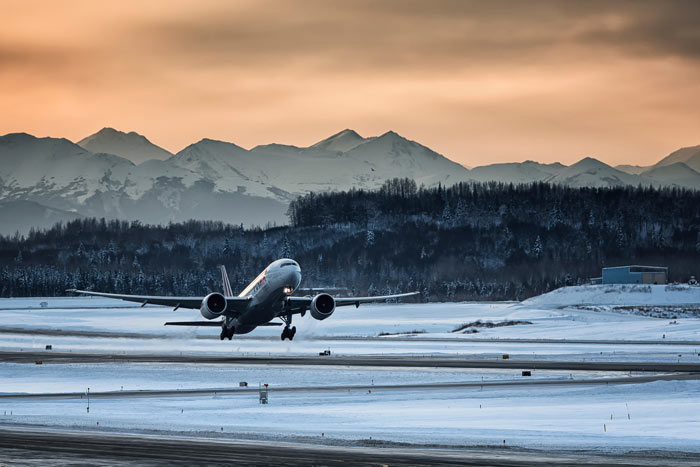President's Committee for Remote Operations
By Capt. Peter Black (First Air), President’s Committee for Remote Operations Chairman

North of the 60th latitude in Canada and Alaska, there are 2.1 million square miles of land—much of which is populated by small towns and villages. For these remote locations, an aircraft is the only means of travel to the outside world for much of the year.
The pilots of Alaska, Canadian North, Calm Air, and First Air serve as the lifeblood for many of these small communities. But many more ALPA pilots overfly the area operating long-haul international flights. Cold temperatures, extended periods of darkness, and other harsh realities create unique operating conditions for ALPA pilots who fly throughout the region.
The services and infrastructure available in the far north are less than ideal. In fact, the navigational infrastructure and airport services many pilots take for granted elsewhere simply don’t exist in this remote environment.
ALPA recognizes the unique challenges pilots face flying in far northern Canada, Alaska, and the Arctic. In 2012, the Association established the President’s Committee for Remote Operations (PCRO) to address these flight operations and safety issues to promote one level of safety for all ALPA members. Representatives of Alaska/Virgin America, Calm Air, Canadian North, and First Air—four airlines that concentrate operations in the region—actively participate on the committee, whose work also affects pilots beyond the region. The PCRO works closely and in conjunction with the subject-matter experts who make up ALPA’s Air Safety Organization.
In addition to scheduled service, some of the far northern airports serve as long-range enroute alternates for extended operations (ETOPS) and long-range operations transpolar flights. Therefore, it’s vital that government officials recognize the importance of these airports. PCRO members have met with senior leaders of Transport Canada and NAV CANADA to address our primary concerns: performance-based navigation procedure design and implementation, airport infrastructure, weather data capabilities, and automatic dependent surveillance–broadcast (ADS-B).
Knowing that straight-in approaches reduce the amount of low-level maneuvering and provide us with more accurate instrument approach guidance with lower minima, the PCRO continues to advocate for these approaches. A clear priority for us is deploying more localizer performance with vertical guidance (LPV) approaches in the Canadian north. These approaches are becoming more widespread, and many more are being developed. Our current goal is to see straight-in precision approaches to every airport in the high Arctic, as they’ll result in additional and safer airline service into these remote communities.
In addition to LPV approaches, we continue to pursue improvements to required navigation performance (RNP) procedures in remote areas. While procedures designed for aircraft equipped with certain GNSS/RNAV capabilities are the primary means of navigation in Canada, an increasing number of aircraft are equipped with RNP capabilities instead of those necessary for GNSS/RNAV procedures.
This difference has created an operational challenge for some airlines, as just a few RNP-equipped carriers are authorized to perform certain RNP/RNP AR procedures with restricted operation specification approval from Transport Canada.
While GNSS/RNAV continues to be the norm in the high Arctic and other remote areas, the PCRO will continue to work with NAV CANADA to ensure that approaches are made available for both RNP- and GNSS-equipped aircraft.
The PCRO is also advocating for improvements to airport facilities, such as grooved runways at ETOPS diversion airports and expansion of paved surfaces and ground support equipment to allow safe taxiing and deplaning of larger widebody aircraft. Furthermore, essential emergency medical and hazmat equipment and training are critically absent at most airports in the region, which ALPA is working to remedy.
Another area of focus for the PCRO is education, and in 2017 PCRO members presented an analysis of airspace and airport capabilities in the remote north at the Flight Safety Foundation’s International Air Safety Summit held in Ireland. The paper was well received and reaffirmed ALPA’s role as a subject-matter expert on the topic. With the assistance of ALPA’s Engineering & Air Safety staff, the PCRO is currently working on a white paper addressing safety issues affecting northern operations.
With support and input from ALPA’s Air Safety Organization, the PCRO will continue its work to ensure that airline pilots who operate in northern Canada, Alaska, and the Arctic are afforded the same level of safety as those who fly in other more populated and less remote parts of the world.

